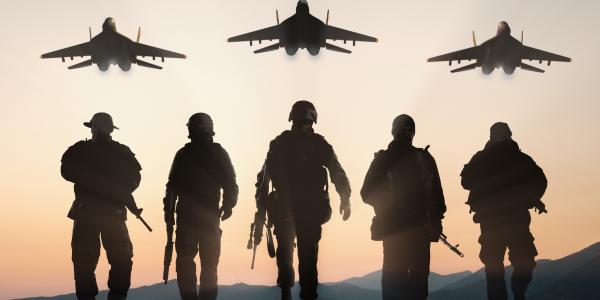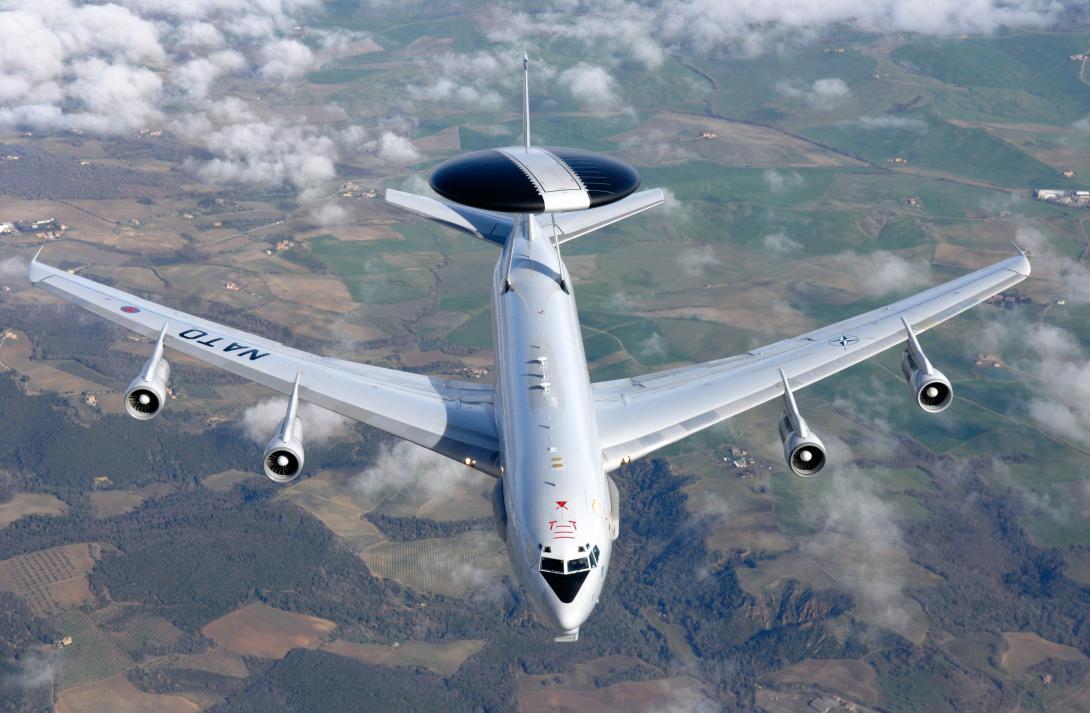From Eyes in the Skies to Data on the Ground
NATO is building a wide range of technological capabilities, including open source intelligence, counterterrorism, artificial intelligence, space-based surveillance, electronic warfare and biometric solutions, some of which were previously left to the individual nations or other international organizations.
The flurry of activity amounts to a complete metamorphosis of NATO’s intelligence, surveillance and reconnaissance (ISR) assets, according to Matt Roper, the joint ISR chief within NATO’s Communications and Information Agency. Roper notes that the alliance’s new direction results directly from the 2012 summit in Chicago.
“It’s fair to say at that point that joint ISR was an emerging construct for NATO. We all knew what ‘joint’ meant. We all knew what ‘intelligence’ meant. We all knew what ‘surveillance’ and ‘reconnaissance’ meant as individual commodities, but putting them together and calling it ‘joint ISR’ wasn’t necessarily clear,” he says. “I think it would be fair to characterize the efforts in NATO ISR as being truly transformational.”
The transformation includes large, high-profile projects, such as acquiring the Alliance Ground Surveillance system, NATO’s version of the Northrop Grumman Global Hawk Block 40. The first system is scheduled for delivery next year to Sigonella air base in Italy.
Replacing NATO’s Airborne Early Warning and Control System, known as AWACS, is another high priority. AWACS will reach the end of its service life in late 2035. The new system—whatever it turns out to be—has been dubbed the Alliance Future Surveillance and Control capability. The system will need to provide an “AWACS plus” ISR ability, Roper says, meaning that it will need to provide everything the AWACS does and more.
Other than that, NATO officials are starting with a clean slate on the AWACS replacement. They are talking to industry partners and individual governments about the art of the possible, exploring emerging technologies, and trying not to “be constrained by views that say you have to have another air-breathing manned platform,” Roper indicates. “There is no preconceived end state.”
The transformation also includes a number of capabilities that may not be new to individual countries or to other European organizations, but they indicate a new direction for NATO itself. For one, the alliance intends to more effectively use open source intelligence, which is information free and open to the public. Roper cites news streams that would include such organizations as the BBC, Reuters and CNN.
It also could involve social media, a relatively new and inherently tricky area for NATO. Individual nations and intelligence agencies find social media helpful for predicting a wide range of major events or threats. For example, an unusually high number of people tweeting about the flu can indicate a coming pandemic. And political unrest sometimes will be demonstrated online before it hits the streets.
“At the moment, we are trying to put our arms around what we characterize as open source intelligence or open source information. You start tripping into what could be of value on Twitter or legally available on Facebook and various other social media platforms. Therein lie some of those ethical and legal discussions about what we’re able to capture and exploit and manage in a NATO context as opposed to what the nations in their sovereign context decide to do,” Roper says. “It’s vastly more complex for NATO to come up with an agreed set of rules or policy on this because we’ve got 29 sovereign perspectives to respect and embrace.”
Despite the challenges, open source intelligence is increasingly critical, he indicates. “We can’t ignore it. Many of our adversaries are using open source information freely and actively, and NATO has recognized that open source intelligence has been one of its challenge areas,” Roper explains.
Biometric intelligence is another area of growing interest for the alliance, in part because NATO in recent years has embraced a role in counterterrorism. Interpol and Europol, two international law enforcement organizations, use biometrics, he points out. “Now NATO is looking at how we may also be able to use biometric data to support the identification of persons of potential interest and tracking and recording and monitoring accordingly,” Roper reports. He adds that biometric intelligence is another area “fraught with legal and ethical challenges,” but other organizations already have addressed many of the obstacles.
The counterterrorism mission also requires enhancing NATO’s countermeasures for improvised explosive devices. NATO strives to “ensure our forces are protected at all possible opportunities” against the threat of improvised explosives, Roper indicates.
The alliance also intends to revamp its big data capabilities to include artificial intelligence that will sort through the immensity of information. “It’s fair to say that joint ISR as a community probably produces more than its fair share of big data, so the management and exploitation of big data is something that is now becoming fundamental. The use of cognitive analytics and artificial intelligence, for example, are becoming increasingly important in terms of separating the relevant from the irrelevant in the vast quantities and complexity of ISR data,” Roper offers.
The intent to better manage and exploit data marks a new focus for NATO. “In the past, our focus was on getting the right mix of sensors available to collect information over a certain area or theater of operations. We’ve moved significantly along from that, and now part of the challenge is not so much the collection but managing the sheer volume of data that’s being delivered,” Roper says.
“There are only so many hours an operator can look at complex imagery, and there’s only so much he or she is going to see, so using cognitive analytics and artificial intelligence is now becoming fundamental to support the whole gamut of exploitation,” he adds.
Roper lists cyber resilience as another relatively new area of focus. ISR data is critical to NATO operations, and the systems gathering, transmitting and storing that data must be protected. “A lot of partnership activities are underway to ensure that what we produce, what we exploit, what we share and distribute and store is properly protected against a range of cyber threats both active and passive,” he reports.
NATO also is rebuilding its electronic warfare capabilities, partly by helping alliance nations adopt and integrate systems within the NATO electronic warfare arena. Because Iraq and Afghanistan did not possess great technologies in the electronic warfare realm, NATO nations allowed those capabilities to lag somewhat during conflicts there. The nations have been surprised by Russia’s electronic warfare and cyber prowess. “That’s an area where historically we were strong, but after the Cold War, we turned the wick down a little bit,” Roper says. “Now we’re realizing that some of that work needs to come alive again. We are seeing a lot of interest in the electronic warfare domain, particularly with regard to active and passive sensor technologies.”
One NATO interest that may be less obvious, Roper says, is geospatial intelligence. “We all use Google Maps and take it for granted, but in military operations, you have to have authoritative geospatial information. That is an area where we are dancing as well in terms of NATO’s core geospatial information system. We are actively promoting for NATO to collectively fight off the same map,” he states.
Roper stresses the need for spaced-based ISR services, which previously have always been provided by the individual nations. “It’s a key enabler, no doubt about it. Space has been really an issue du jour for the last three or four years for us. We’re integrating commercial imagery using our geospatial information system, which is becoming really quite significant,” he says.
Technology miniaturization also is important to NATO’s ISR transformation, largely because it allows for greater dissemination of ISR data to the tactical edge. “We’re looking at how far down the chain we can get the ISR information. Miniaturization of technology, including digitization of power supplies, is becoming something of great topical interest to our team here,” Roper says.
Finally, sharing ISR data among the nations remains a concern, as it has been for years. The information is often highly classified, and the nations have different rules for sharing it. “It’s certainly getting better, but as ever, you’re never going to crack it completely. We don’t have that perfect environment where intelligence gathered and collected within a national context is freely and actively shared within the alliance,” he says, adding that NATO endeavors to create an environment in which information can be freely shared.






Comments